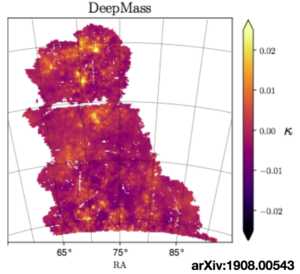| Authors: | F. Lanusse |
| Language: | C++ |
| Download: | GitHub |
| Description: | A weak lensing mass-mapping tool that implements sparsity-based regularisation. |
| Notes: |
Glimpse is a weak lensing mass-mapping tool relying a robust sparsity-based regularisation scheme to recover high resolution convergence from either gravitational shear alone or from a combination of shear and flexion. Including flexion allows us to supplement the shear on small scales in order to increase the sensitivity to substructures and the overall resolution of the convergence map.
In order to preserve all available small-scale information, Glimpse avoids any binning of the irregularly sampled input shear and flexion fields and treats the mass-mapping problem as a general ill-posed inverse problem, regularised using a multi-scale wavelet sparsity prior. The resulting algorithm incorporates redshift, reduced shear, and reduced flexion measurements for individual galaxies and is made highly efficient by the use of fast Fourier estimators.
The source code for Glimpse is made publicly available and is hosted on Github at https://github.com/CosmoStat/Glimpse
Test on realistic simulated dark matter distributions
Glimpse was tested on a set of realistic weak lensing simulations corresponding to typical HST/ACS cluster observations and demonstrate our ability to recover substructures with the inclusion of flexion which are lost if only shear information is used. In particular, we can detect substructures at the 15′′scale well outside of the critical region of the clusters. In addition, flexion also helps to constrain the shape of the central regions of the main dark matter halos. These simulations, along with the reconstructions produced by Glimpse can be found in this archive : flexion_benchmark.tar.lzma.
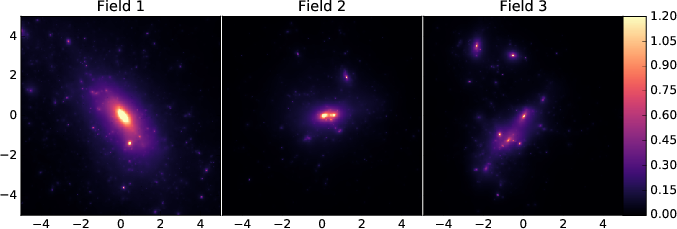
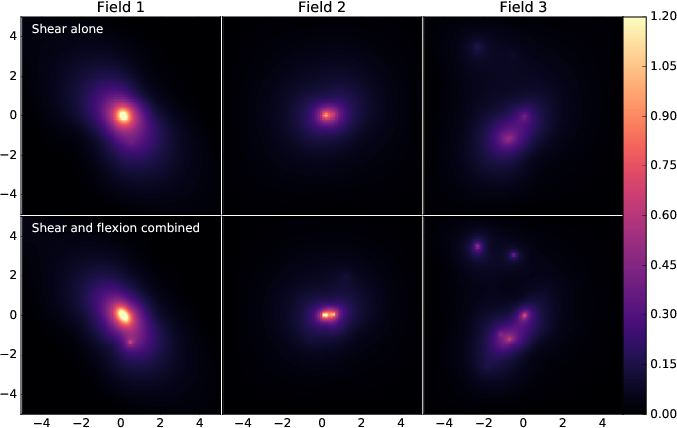
Applications to real data
A520 Cluster Merger
We have used Glimpse to reconstruct the mass distribution of Abell 520, a merging galaxy cluster system also known as the 'cosmic train wreck'. We obtained high-resolution mass maps using two separate galaxy catalogs derived from HST observations and compared the results to previous weak-lensing studies of the system.
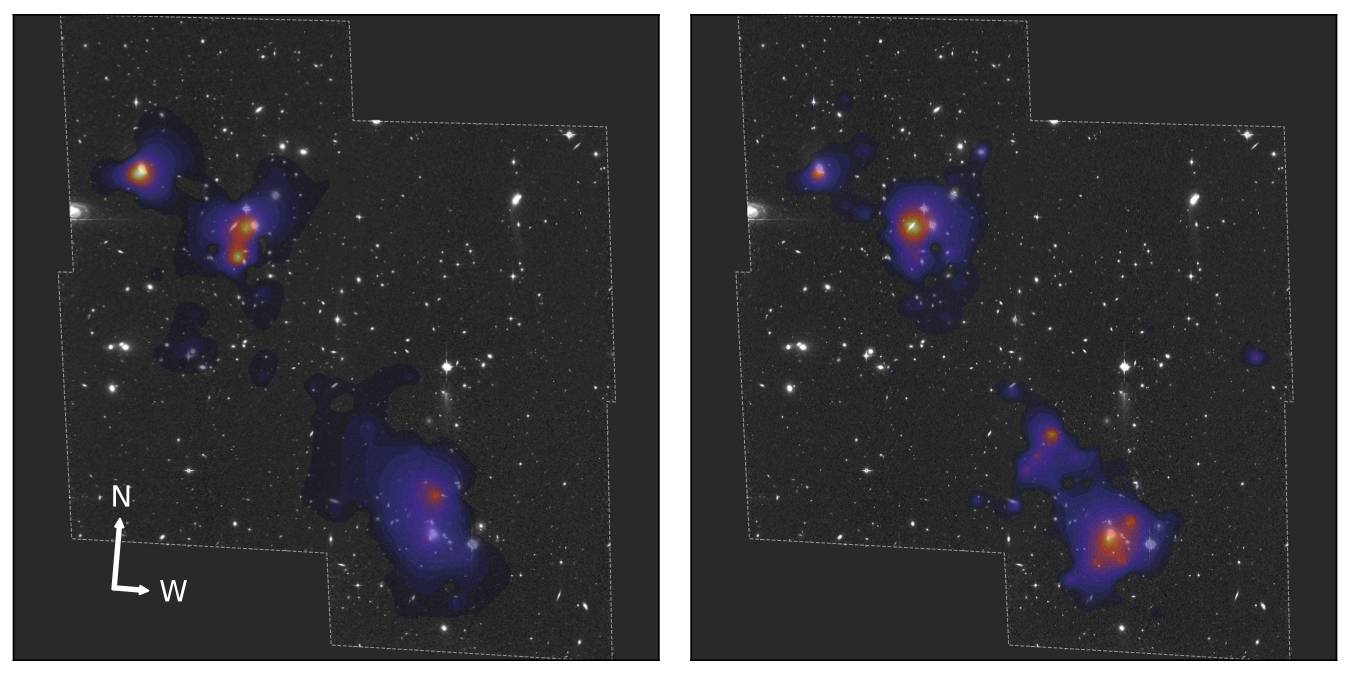
The galaxy catalogs in FITS format and configuration files for Glimpse can be downloaded here. Example outputs are included for each data set.
To generate the convergence map of the C12 data with a regularization parameter of 3.0, for example, edit the config_A520_c12.ini file and set the 'lambda' option equal to 3.0 under [parameters]. Then run
$ glimpse config_A520_c12.ini A520_cat_c12.fits kappa.fits
to obtain an output convergence map called 'kappa.fits'.
DES SV data
Glimpse has been used to map the matter density field of the Dark Energy Survey (DES) Science Verification (SV) data. The Glimpse reconstruction was compared to two other mass-mapping methods: standard Kaiser-Squires inversion and the Wiener filter.
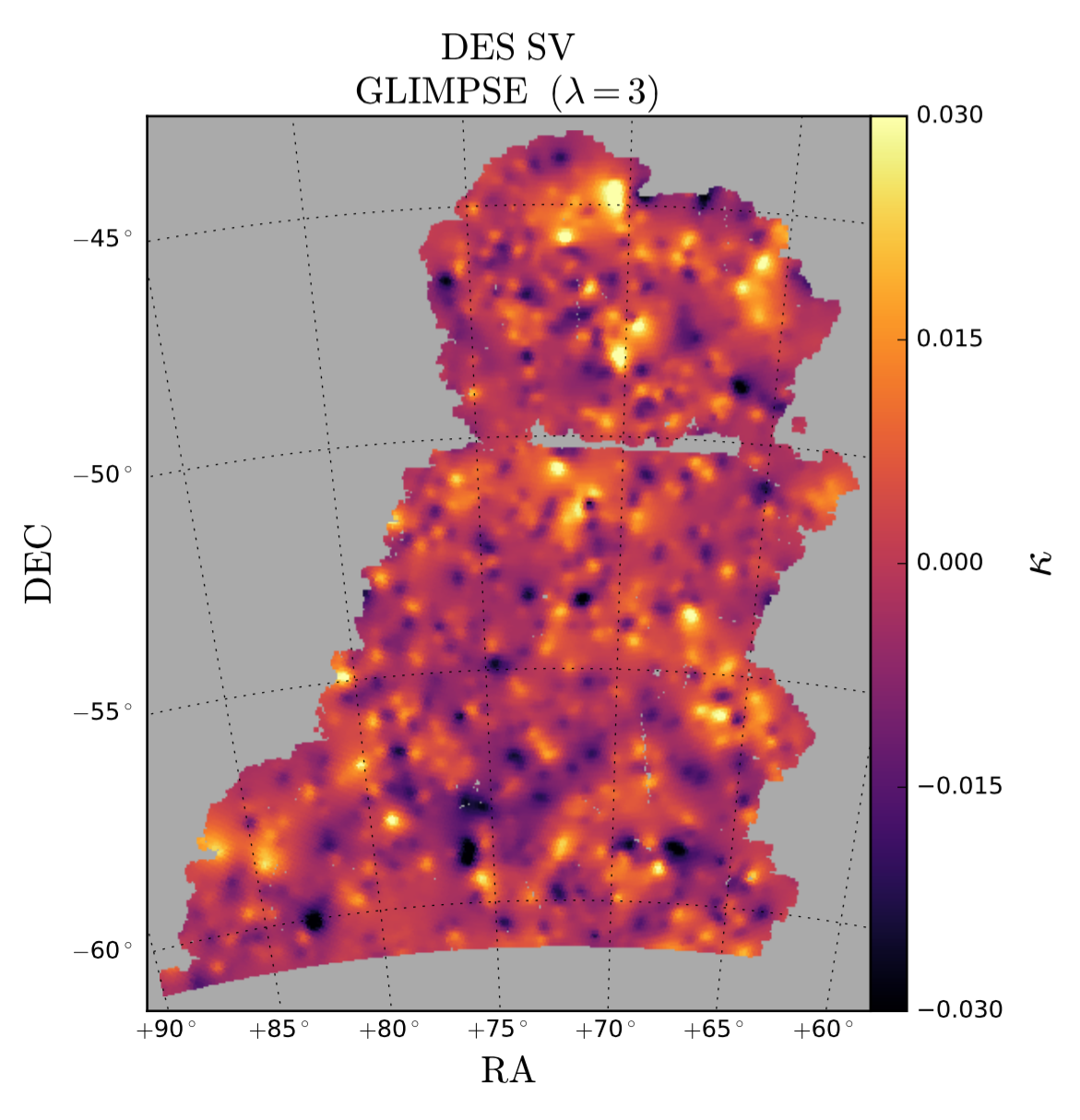
Publications
- F. Lanusse, J.-L. Starck, A. Leonard, S. Pires, High Resolution Weak Lensing Mass-Mapping Combining Shear and Flexion, 2016, arXiv:1603.01599
- A. Peel, F. Lanusse, J.-L. Starck, Sparse Reconstruction of the Merging A520 Cluster System, 2017, arXiv:1708.00269
- N. Jeffrey, F. B. Abdalla, O. Lahav, F. Lanusse, J.-L. Starck, Improving Weak Lensing Mass Map Reconstructions using Gaussian and Sparsity Priors: Application to DES SV, 2018, arXiv:1801.08945



